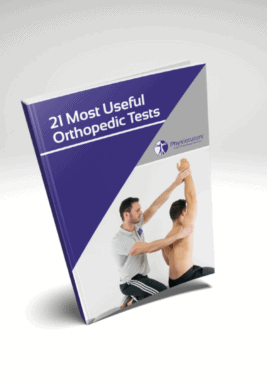Learn
Relocation Test | Anterior Shoulder Instability Assessment
The shoulder joint has a tremendous degree of mobility, which renders it prone to instability. While muscle forces control stability in mid-ranges of motion, clinical instability presents itself at end range of motion. The instability becomes apparent when a patient has apprehension or, fear of subluxation, at end range of motion.
The shoulder relocation Test has a sensitivity of 64.6% and specificity of 90.2% according to Hegedus et al. (2012). It’s a subsequent test to the apprehension test where when clustered together performs well in the diagnosis of anterior instability. As a stand-alone test however it has only moderate clinical value.
The test is used when the patient has reported apprehension during the apprehension test. So the fear of subluxation when the patient’s arm is brought into 90° of abduction and added external rotation. There the examiner gives an anterior-to-posterior (AP) directed pressure at the humeral head.
The test is considered positive when the patient’s fear of luxation is reduced after the AP pressure is applied.
Other common tests to assess anterior glenohumeral joint instability are:
21 OF THE MOST USEFUL ORTHOPAEDIC TESTS IN CLINICAL PRACTICE

Like what you’re learning?
BUY THE FULL PHYSIOTUTORS ASSESSMENT BOOK
- 600+ Pages e-Book
- Interactive Content (Direct Video Demonstration, PubMed articles)
- Statistical Values for all Special Tests from the latest research
- Available in 🇬🇧 🇩🇪 🇫🇷 🇪🇸 🇮🇹 🇵🇹 🇹🇷
- And much more!








